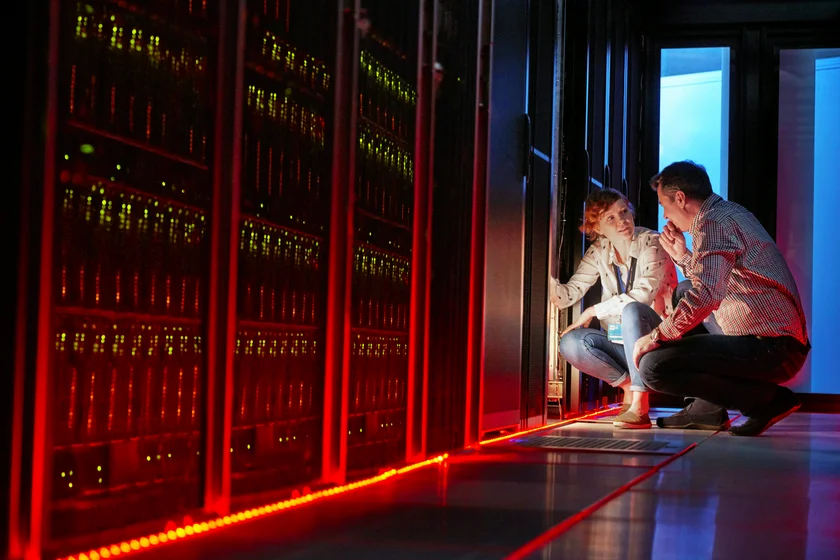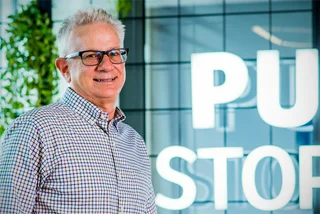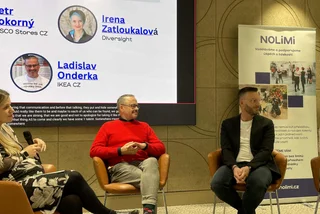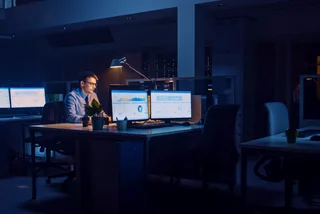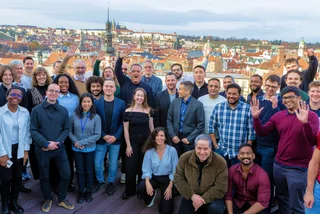To remain relevant in the digital age, companies and organizations require comprehensive solutions for storing and managing data. Excitingly for IT engineers based in Czechia, one of the world’s leading innovators in this field, Pure Storage, bases one of its three global development sites in Prague’s Karlín district.
It’s a prestigious place to work for top tech talent, as the Prague center blazes a new trail in innovative all-flash storage solutions. With Pure investing heavily into research and development, the company is opening up unique opportunities for a new breed of AI-assisted, future-looking experts.
Expats.cz sat down with Rajiev Rajavasireddy, the Head of the Prague Development Center, and Ajay Singh, Chief Product Officer, to find out more about transformation in data storage and the benefits which Prague brings to this Silicon Valley tech giant.
Can you explain data storage, and the role of Prague within your global operations?
Rajiev: When a customer wants to use storage, they write data to us so that we can store it. Our products provide the protocols for them to write this data. We also provide data services, such as snapshots for restoring your system back to a previous point in time, and security. Who’s accessing your data? Are you able to protect your data? Are you replicating it to another array, so it can be saved if the first burns down?
We approach these areas of development at three sites, in California, Prague and Bangalore, India. Different projects go to different sites, so a bit of everything happens here.
How does investing in research and development (R&D) drive your success?
Ajay: We put roughly 18 percent of our revenue into R&D; our competition is at single-digit percentages. We run this as an innovation, growth, high-tech business. It’s like when videos went from DVDs to streaming; think of us as the Netflix of storage.
Rajiev: We’ve always invested above the industry average in R&D, because our success is heavily dependent on innovation. We’re completely changing the way things are done in this industry. We have a huge density advantage in terms of data per square inch of space relative to the rest of the industry, and we’re not done innovating.
What kind of job applicants do you look for to help drive this growth?
Ajay: We hire upper-quartile engineers; our filters are really tight, so it’s not easy to get into Pure Storage. We believe a modern engineer is an AI-assisted, quality and security accountable engineer, and that’s the kind of person we hire.
There’s a lot of opportunity from an educational standpoint, with various programs available depending on how engineers want to grow: technical development, public speaking, management development and more.
Rajiev: It all depends on what the individual wants. An engineer may be interested in the management track, or the technical lead and architect track. We also provide a lot of ability for engineers to move laterally within the company.
What makes Pure tempting for the best IT engineers in a competitive labor market?
Ajay: Competition is fierce; but we’re not afraid to compete. What engineers get here more than with other players is ownership of an area or product; it’s their baby, they run with it. We have an open, friendly, collegial and transparent culture where they can thrive and hone their skills to become that future-looking, AI-assisted, quality- and security-accountable engineer.
What’s special about Pure Storage products?
Ajay: We focus exclusively on all-flash storage. Our view is that in the long-term, flash storage will disrupt disk storage.
We have our Purity operating system that manages our storage, a scale-up architecture called FlashArray, a common set of flash memory modules, a management system called Pure1, and a container data management solution in Portworx. Then, there’s Evergreen, our cloud operating model. The simplicity of our portfolio is unique in the industry.
The other unique thing is the fact that our Evergreen architecture is “always modern”. Once you buy a storage system from us, you won’t have to buy another system; we can ensure that ten years later, you have the latest system with no downtime for updates.
Why the focus on flash storage?
Rajiev: Flash is consistent and much better at Random I/O than disk storage. Flash is also much better from the ESG perspective; higher density allows you to store much more data per square inch than you would with hard drives.
Ajay: Flash systems consume a tenth of the power of disk systems. That’s a huge plus given today’s data center power consumption. They drive higher performance, and vitally, they’re typically 10-15 times more reliable.
Hard disk is in its seventh decade of innovation and has few remaining opportunities for optimization. Flash is in its third decade of innovation, driven by consumer flash in mobile phones and devices, and there’s a ton of opportunity to go denser. We are the only 100-percent born-in-flash provider; our engineers know flash like no others.
What are the benefits for customers of Pure’s solutions?
Rajiev: When companies are spending on infrastructure, they want to make sure that they get the best deal possible. Another question which customers ask is whether they’ll need a PhD in storage in order to actually manage the system, or whether they can just leave it. Customers always describe our solutions as simple and easy.
Ajay: It also comes down to much lower cost of ownership, with up to 50 percent lower cost compared to other solutions. This is due to significantly higher reliability, and non-disruptive upgrades without downtime. Our systems also consume significantly less power and they take up less space.
How are Pure’s products changing in response to the rise of AI?
Rajiev: AI is not new for us, although ChatGPT and OpenAI have now brought it to the public attention. We started building systems over a decade ago specifically in order to have the required capacity and performance with future AI in mind.
Back in 2018, in partnership with Nvidia, we released our AI-ready architecture called AIRI. We handle a lot of AI customers across the spectrum, whether it’s training, inference, or AI operated as a service. We built our products for AI and these early bets are paying off.
Ajay: One of our major references is the world’s largest AI resource supercluster driven by Meta, which uses Pure Storage as the storage provider.
The future of AI will involve training applications, where you train models, and inference applications. Over time, there will be more and more inference applications, which use a model, adapt it to your local data, and then drive inferences from it.
We offer our customers solutions that have everything on flash, which makes their data much more accessible to run against their models. This is a huge plus for making their infrastructure AI-ready.
How is AI going to affect cybersecurity?
Rajiev: We approach security holistically. We have a whole process for checking code before we put it out, with all the right security processes having been followed while we’re building it. We provide features including data encryption, access mechanisms allowing the creation of roles for admins, operators and users, and more.
We also provide innovative services. For example, if you get hit by ransomware, you need a copy of the data which you can be sure nobody has touched. We have something called SafeMode Snapshots, which take a snapshot of your data at a time when you knew your system wasn’t compromised, and makes it “immutable”, so that nobody can meddle with it.
AI can help in this regard, because you can use AI to augment the detection of patterns that show that someone is messing with your data.
What is your outlook for Pure in Prague in the coming years?
Ajay: We are a disrupter, growing faster than our competition with a $60 billion total addressable market. There’s a lot of headroom for us to continue to grow. Prague is the most important European location for us in terms of engineering, with a great radius to draw talent from.
Rajiev: We started this center because we believed it was a tech hub where we could attract a lot of talent, not just from the Czech Republic, but also from surrounding countries. We have been proven right; it really is a great place for us.
This article was written in cooperation with Pure Storage. Read more about our partner content policies here.











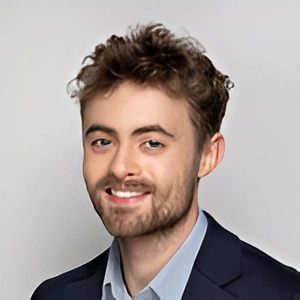
 Reading time: 6 minutes
Reading time: 6 minutes 

